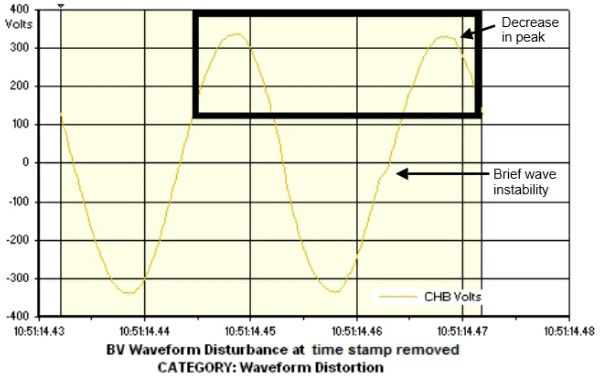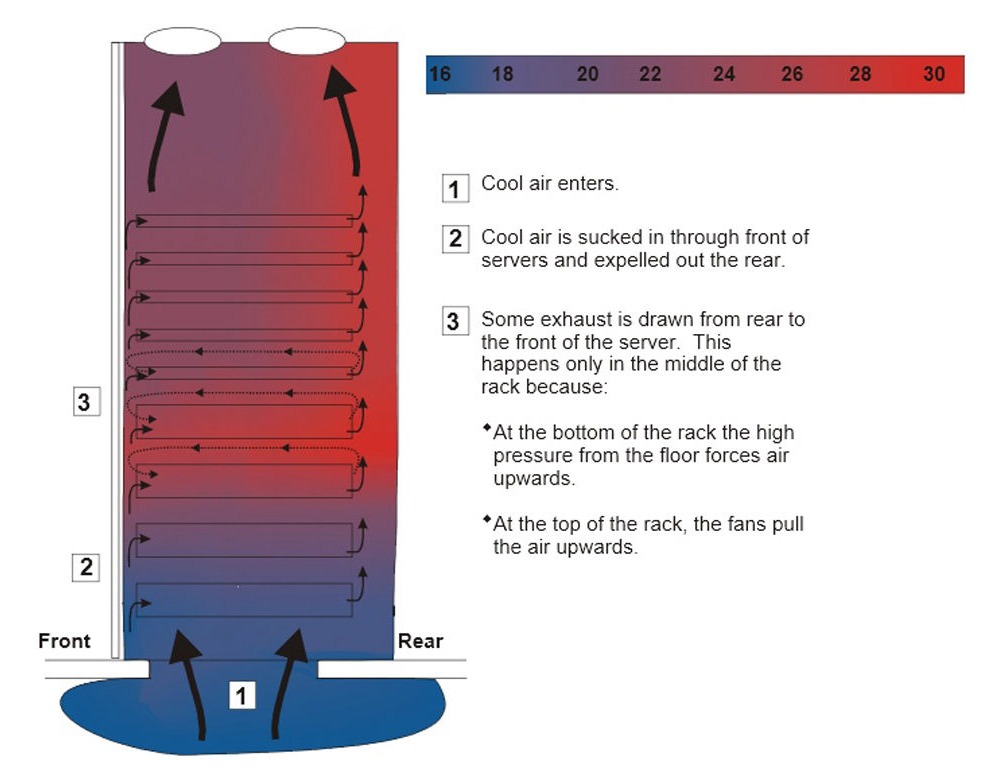How the RITEL Data Centre Audit has Prevented Problems - Case Studies
Excessive heat at front of cabinet traced to abnormal air flow
A RITEL data centre audit found that the front of some cabinets were warm to the touch, despite adequate hall cooling. We conducted anemometer experiments and measured the case temperature of each server. Inlet temperatures rose with height above floor tile level and begin to exceed recommendations for best reliability at a height of about 1.5m. We found that the front was hot for two reasons: it was warmed externally by hot exhaust from surrounding cabinets and internally, by a microclimate set up in the middle of the cabinet. Within the cabinet, all servers were spaced 1U to give better entry flow of air but blanking plates were missing. In the middle of the cabinet, exiting air flow slowed down enough to be drawn back to the front of the servers where it mixed with cold air running up the front before passing into the server. We recommended that the customer fit 1U blanking plates to separate warm air at the rear from cold air at front from a height of 1m above tile level. This allowed fans to draw all warm air out at the top.
Low humidity had not been flagged by BMS System
A RITEL data centre audit identified a failed humidifier unit early in the audit. Our 7 day recording showed very low humidity initially but by day 3 humidity had dramatically increased. We traced the problem to a failed humidifier unit which was repaired by the client and humidity was restored quickly. Low humidity had not been flagged by the BMS system.

Audit uncovered source of ‘not-yet-mature’ zinc whiskers which were then removed before causing problems
Routine sampling of raised floor pedestals revealed zinc whiskers. The longest whisker was only 200 microns, less than the critical length known to cause problems with electronic circuitry. Zinc whiskers continue to grow, albeit at a slower rate as time progresses, until they may be dislodged and cause a reliability problem. Because of the location of these whiskers (in the floor void which was subjected to directed airflow) longer whiskers could present reliability problems, by causing short circuits in voltage driven (CMOS) chips. We recommended that the whiskers be removed soon, while they were still short and unlikely to cause a problem, then the area should be monitored for future whisker growth.

Audit uncovered power abnormalities which were traced to a failing UPS capacitor
A RITEL data centre audit found intermittent waveshape faults and variable rms voltage on one phase of the 3-phase supply. The cause was found to be a failing capacitor in the solid state UPS system. Unit was repaired before any loss of service occurred.


